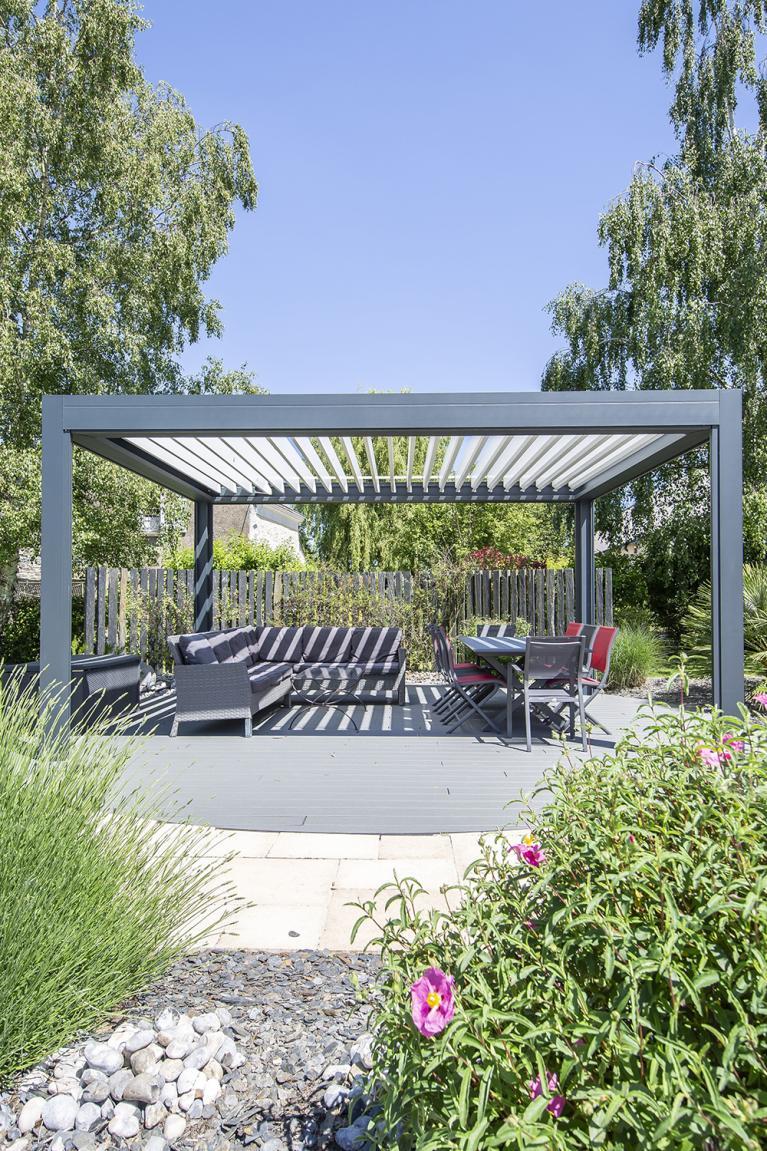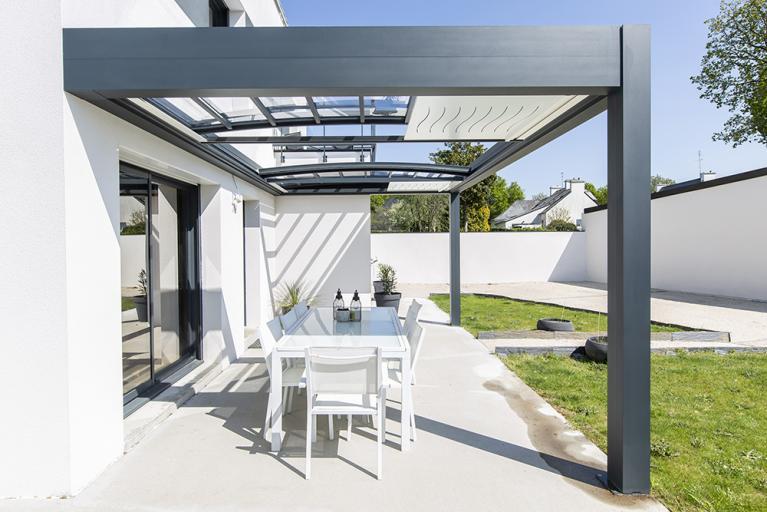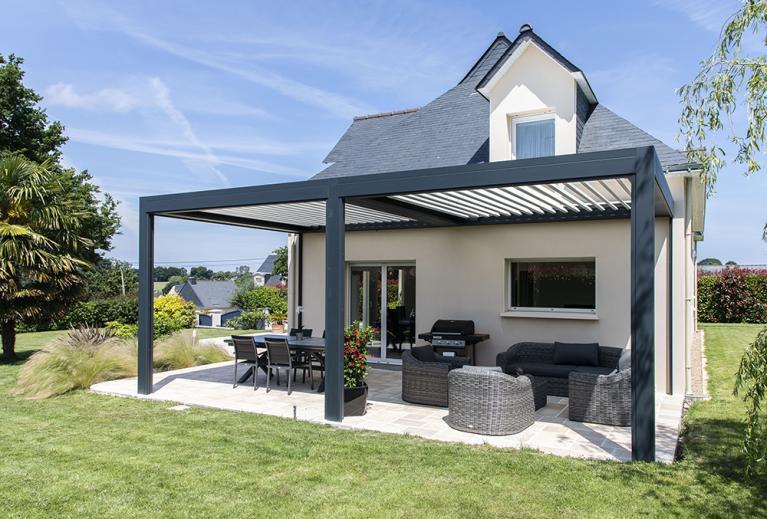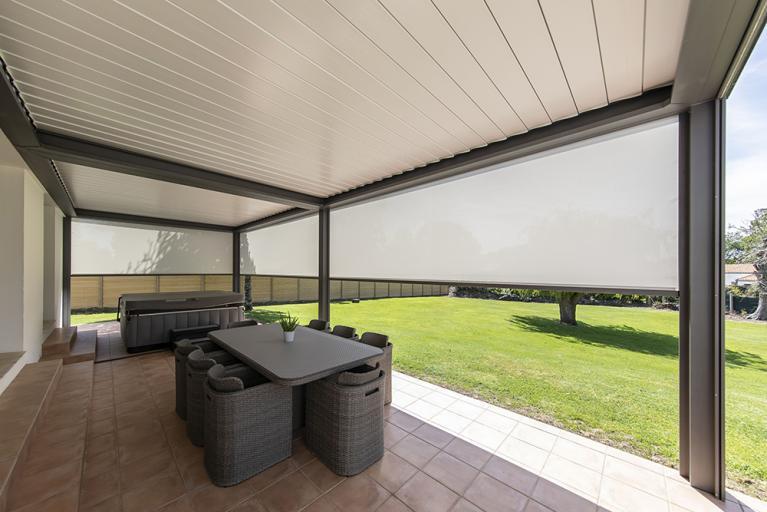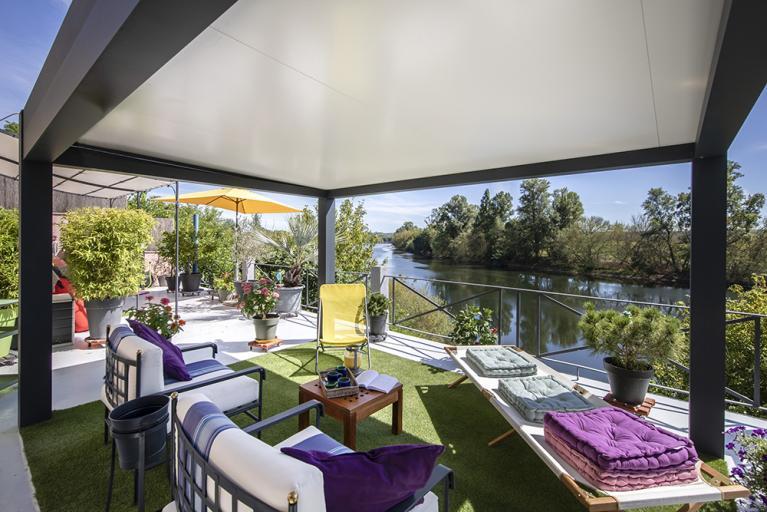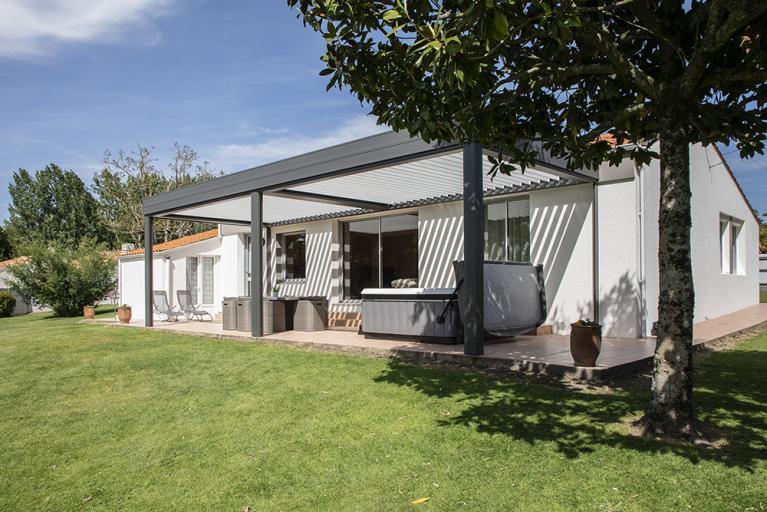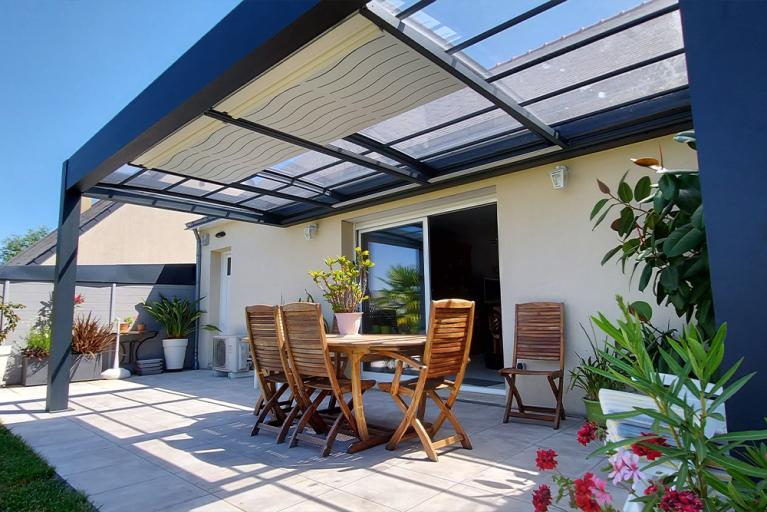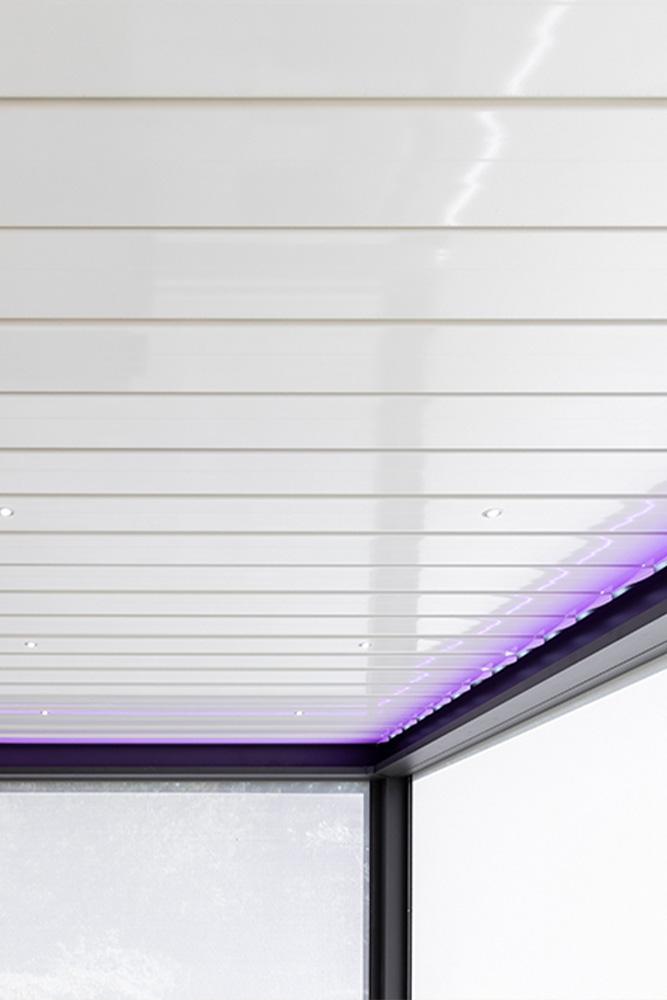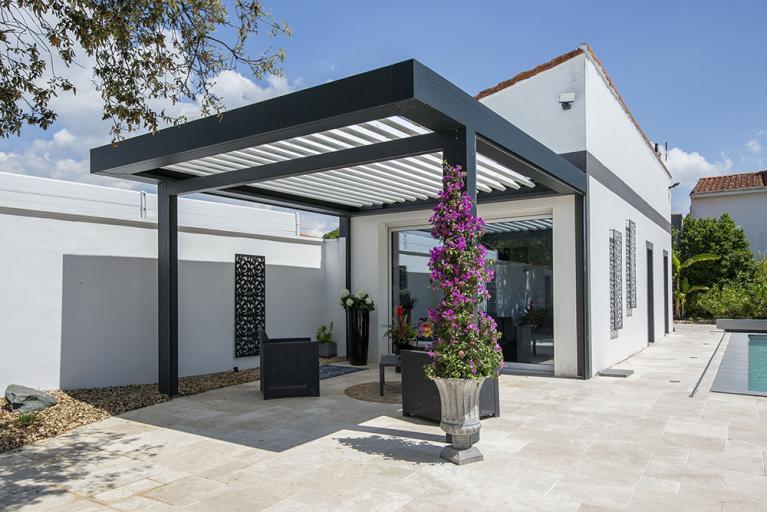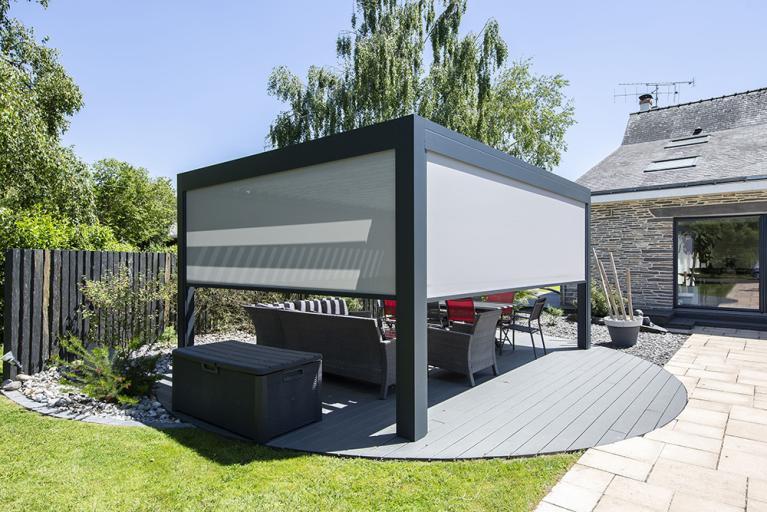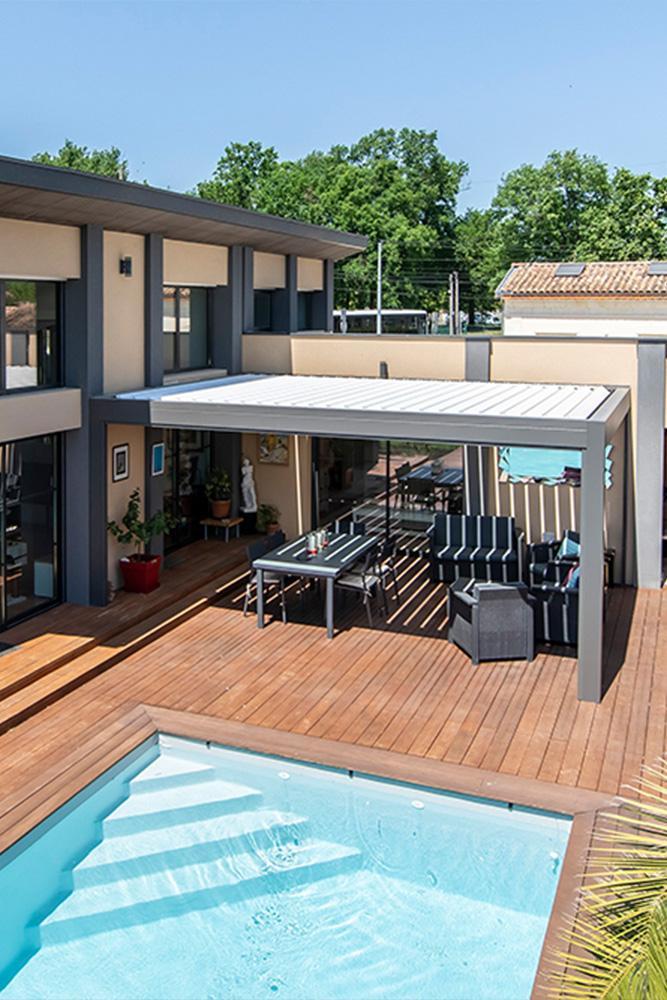Freestanding or lean-to pergola: which should you choose?
You're planning to install a pergola in your garden, and you're right! Protecting you from the elements and the sun's rays will allow you to make the most of your outdoor space. But you're wondering about the different models available. What's the difference between a freestanding pergola and a lean-to pergola? What's so special about a bioclimatic pergola? And what are the advantages of a freestanding pergola?
Materials for a free-standing pergola
You can install a pergola in wood, aluminium, wrought iron or even PVC. But if you want a sturdy structure that will stand the test of time, we advise you to opt for a self-supporting aluminium pergola. Aluminium requires very little maintenance, and the fine curves of the structure are very attractive. It's also available in a range of colours.
When it comes to the roof of your freestanding pergola, you can choose between double glazing, polycarbonate, adjustable slats (if you opt for a bioclimatic freestanding pergola) or slats on which you can grow climbing plants, for example.
The advantages of a freestanding pergola
Here are a few good reasons for installing a freestanding pergola:
- The major advantage of a freestanding pergola (also known as a freestanding or island pergola) is that you can choose where you want to place it. There's no need for a supporting wall to build this pergola.
- Its dimensions depend solely on the space you want to allocate to your pergola! You don't have to take into account the length of the front of your house.
- You can enjoy your garden protected from the elements. You can sit comfortably in the middle of your greenery. Take an umbrella or a hat and enjoy a moment of relaxation, sheltered but in the open air!
- It's a great place to relax and enjoy a drink. Your guests will be delighted to see this haven of peace in the middle or at the back of the garden.
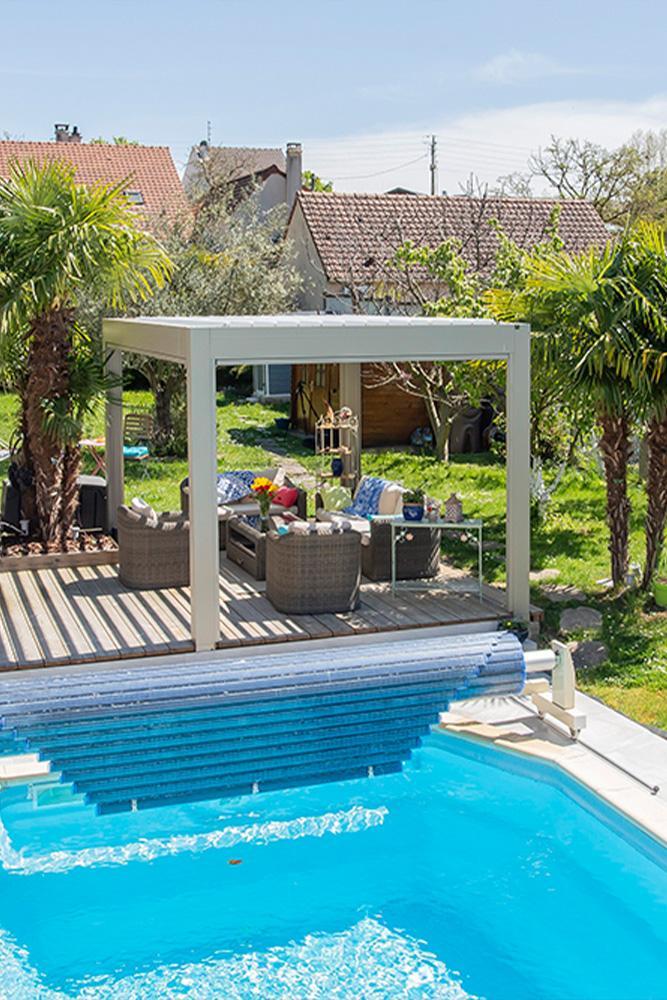
Find all the articles in the magazine
You have a project?
Would you like a personalised 3D study and a free quotation? Contact us by clicking below.
AKENA is...
Over 40 years of experience
Founded in 1981 by one man, we now have more than 500 employees dedicated to making your project a success.
Made in France
A historic site and two factories covering more than 25,000 m² in Dompierre-sur-Yon in the Vendée region (85)
Innovative and tailor-made products
At AKENA, we are brimming with new ideas to improve and enhance our products.
The European leader in conservatories, pergolas...
But not only! AKENA also offers a complete range of carports and pool houses.
